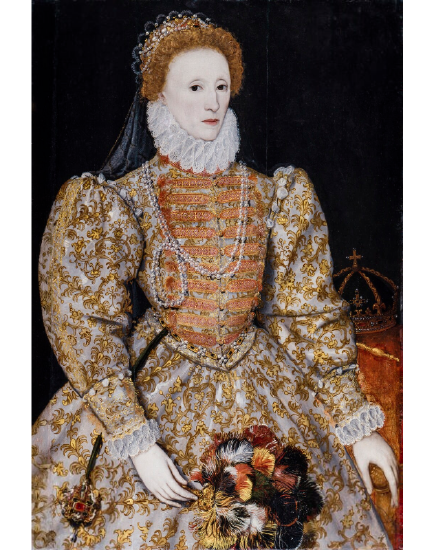1.2: Publication and Reception
- Page ID
- 58038
When was this published, and how was it received?
Publication History
The first edition of John Foxe's Actes and Monuments, or Book of Martyrs, was first published in English by John Day on March 20, 1563 (Freeman 699). The book contains about 1,800 pages, which give a wide chronological and geographic scope of the history of martyrs. This was also one of the first printed books to include an index and calendar. The Book of Martyrs describes the church history from Wyclif to the time of Queen Elizabeth, with an introductory section of the book explaining the history of the Church, starting from the year 1000 to include all of the people who have given up their lives for Christ (699). The focus is primarily on English history, but martyrs from other nations are also included. Foxe also reprinted archival material for the first time in the Book of Martyrs. Foxe was actually forced to publish the Book of Martyrs before he was finished with research under pressure from his publisher, John Day. A second edition of the Book of Martyrs was produced after Day and Foxe saw the success of the first edition and, in Foxe's eyes, it was also necessary to correct the flaws in the first edition (699).
The Book of Martyrs in Elizabethan England
 Perceived as a critical source of anti-Catholic material by its contemporaries, The Book of Martyrs exerted considerable influence on English Protestantism. With Foxe’s histories of Protestant martyrs, the text provided affirmation of religious reformation during the period of conflict between Protestantism and Catholicism. Following the Catholic reign of Mary Tudor, Queen Elizabeth permitted the copious spread of The Book of Martyrs to be available to the educated and the common folk. With its spreading popularity, Foxe's book shaped notions of Catholicism as the other evil. From pride and strength came the endorsement of denouncing Catholicism and its believers. Foxe’s Book of Martyrs is a subjective piece that promotes Protestant martyrdom and warns people of the violence that emanates from Catholicism. The Book of Martyrs provided the framework to unify England as a Protestant nation and regain strength in nationalism (King).
Perceived as a critical source of anti-Catholic material by its contemporaries, The Book of Martyrs exerted considerable influence on English Protestantism. With Foxe’s histories of Protestant martyrs, the text provided affirmation of religious reformation during the period of conflict between Protestantism and Catholicism. Following the Catholic reign of Mary Tudor, Queen Elizabeth permitted the copious spread of The Book of Martyrs to be available to the educated and the common folk. With its spreading popularity, Foxe's book shaped notions of Catholicism as the other evil. From pride and strength came the endorsement of denouncing Catholicism and its believers. Foxe’s Book of Martyrs is a subjective piece that promotes Protestant martyrdom and warns people of the violence that emanates from Catholicism. The Book of Martyrs provided the framework to unify England as a Protestant nation and regain strength in nationalism (King).
Image: "Queen Elizabeth I" (c. 1575) via National Portrait Gallery, London (Creative Commons License)

